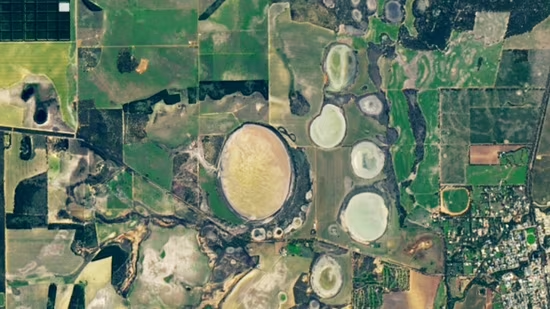NASA finds ‘fairy circles’ in Australia emitting Hydrogen: Report.
NASA released a picture revealing intriguing natural formations known as “fairy circles” in Australia, which were found to be releasing hydrogen gas from their edges.
The images were captured by the Operational Land Imager-2 (OLI-2) on Landsat 9 on June 27, 2023, near the town of Moora, located approximately 150 kilometers north of Perth in the country. This has the potential to be a quest for “alternatives to fossil fuels”.
In the region, clusters of these round depressions can be spotted running along the Darling Fault, which stretches from north to south. Although they are sometimes referred to as salt lakes, these features are several hundred metres in diameter, and the amount of vegetation and water within them changes over time. The image showcases groups of these fairy circles near Moora.
🔥 What about we co-host a webinar? Let's educate, captivate, and convert the hydrogen economy!
Hydrogen Central is the global go-to online magazine for the hydrogen economy, we can help you host impactful webinars that become a global reference on your topic and are an evergreen source of leads. Click here to request more details
In 2021, researchers stumbled upon the presence of hydrogen in the region while conducting soil-gas measurements. They noticed heightened hydrogen concentrations along the perimeter. According to the NASA report, Australia’s Commonwealth Scientific and Industrial Research Organisation (CSIRO) was the first to officially identify these natural hydrogen emissions in the country and establish a connection with the region’s geological characteristics.
Hydrogen is the simplest and lightest element in the universe and is quite common. However, in Earth’s atmosphere, hydrogen molecules (H2) are scarce because they are highly reactive. Typically, hydrogen can be found at very low concentrations, measured in parts per million, in deep drill holes.
The process of producing green hydrogen involves using renewable sources to break down water molecules (H2O) into oxygen (O2) and hydrogen (H2) through a process called electrolysis.
How can Hydrogen form naturally?
Hydrogen can naturally form within the Earth’s subsurface through various processes, such as specific interactions between water and rocks and the breakdown of water molecules due to radiation, a phenomenon known as ‘radiolysis’.
In the North Perth Basin, the environmental conditions appear to support the production of hydrogen, the NASA report said. According to the researchers, their theory suggests that this hydrogen is generated when water reacts with the iron-rich rocks in the region. Upon examining geophysical data, it is believed that fault zones might serve as vertical channels through which this gas can migrate to the surface.
Previous instances of Hydrogen cluster discoveries
-In the past, hydrogen reservoirs were often discovered accidentally. For instance, in the late 1980s, well diggers in Mali (African nation) unexpectedly encountered a highly concentrated natural hydrogen deposit.
-Currently, the use of satellite imagery has made it easier to identify ‘fairy circles’ that could potentially be investigated as sources of hydrogen seepage.
-Various semi-circular to circular surface features containing high concentrations of hydrogen in their soil have also been observed worldwide, spanning from Brazil and Russia to the US state of North Carolina.
-According to NASA, experts believe that there are likely numerous undiscovered natural sources of hydrogen waiting to be found, provided the right tools and a willingness to explore exist.
What are the advantages of ‘green’ Hydrogen?
– Green hydrogen is entirely sustainable and does not release harmful emissions during production or combustion.
-Hydrogen is easily stored, making it suitable for use at a later time or for different purposes than its initial production.
-Green hydrogen is adaptable and can be converted into electricity or synthetic gas, serving various purposes in commercial, industrial, or transportation sectors.
Disadvantages with Hydrogen
-Green hydrogen production is expensive due to the higher cost of renewable energy sources needed for electrolysis.
-Hydrogen production, especially green hydrogen, consumes more energy compared to other fuels.
-Hydrogen is volatile and flammable, demanding rigorous safety measures to prevent leaks and explosions.
Rubio surpassed the US space endurance record of 355 days on Monday at the International Space Station. He arrived at the outpost last September with two Russians for a routine six months. But their stay was doubled after their Soyuz capsule developed a coolant leak while parked at the space station.
The trio will return to Earth on Sept. 27 in a replacement capsule that was sent up empty for the ride home.
By then, Rubio will have spent 371 days in space, more than two weeks longer than Mark Vande Hei, the previous US record holder for a single spaceflight, Russia holds the world record of 437 days, set in the mid-1990s.
Bill Nelson, NASA chief said via X, formerly known as Twitter.
Your dedication is truly out of this world, Frank!
NASA finds ‘fairy circles’ in Australia emitting Hydrogen: Report, September 10, 2023








